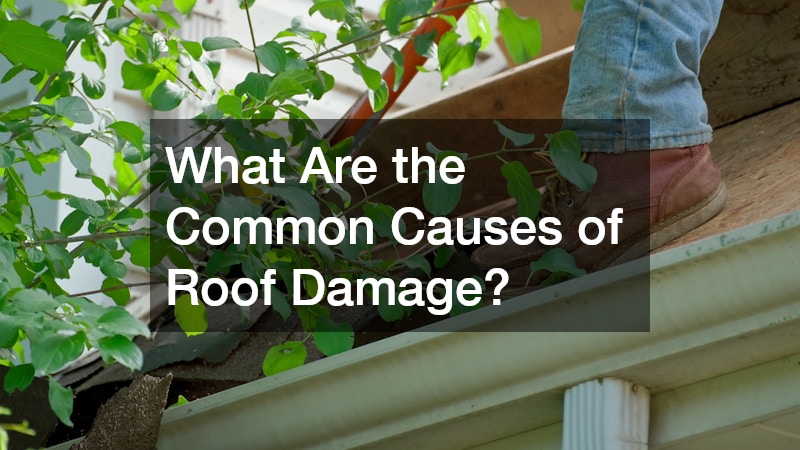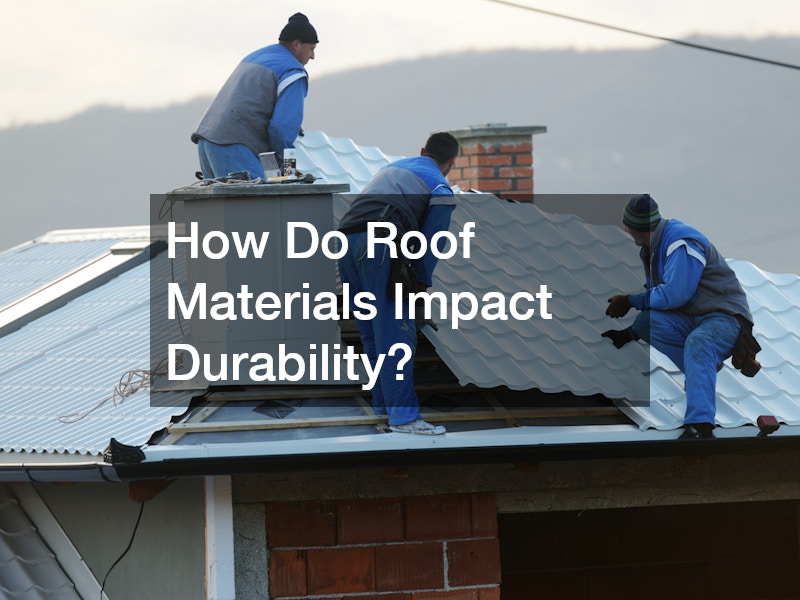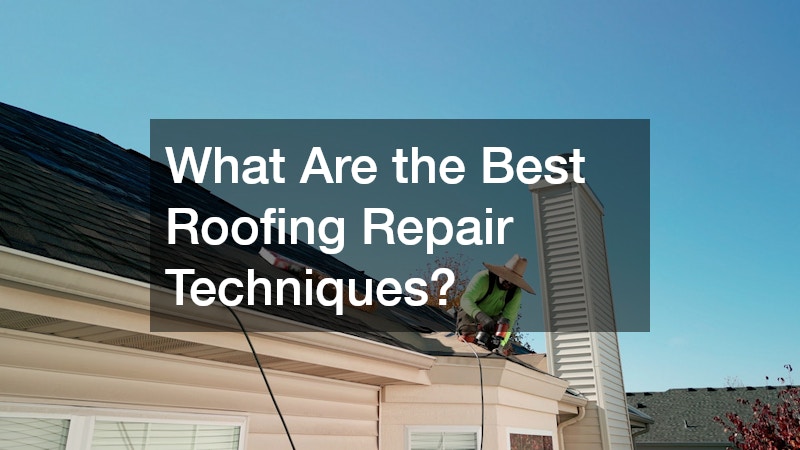Your roof is one of the most critical components of your home, serving as a protective shield against the elements and helping maintain the structural integrity of your property. Yet, it’s often overlooked until visible damage or leaks occur. Unfortunately, roofs are constantly exposed to harsh weather, fluctuating temperatures, and natural wear and tear. Without proper care, these factors can quickly lead to significant issues that compromise the safety and value of your home.
Understanding roof damage solutions is essential for every homeowner. Whether it’s damage caused by storms, poor installation, or neglect, addressing problems early can save you from costly repairs or premature roof replacement. This article explores common causes of roof damage, how to identify early signs, and practical steps to protect your roof year-round. We’ll also cover how materials, ventilation, and professional services play vital roles in maintaining your roof’s longevity.
With insights on gutter installation, roofing companies, metal roofing, and residential roofing services, this guide aims to equip you with actionable knowledge to preserve your home’s first line of defense. Keeping your roof in top condition isn’t just about aesthetics—it’s about ensuring your family’s safety and comfort through every season.
1. What Are the Common Causes of Roof Damage?

1.1 Weather Conditions
One of the most frequent causes of roof damage stems from weather conditions. Rain, snow, hail, and wind all take a toll on roofing materials over time. Heavy rain can lead to leaks and water infiltration, especially if gutters are clogged or damaged. Snow and ice buildup can cause ice dams, leading to water pooling under shingles and damaging the roof deck.
Strong winds may lift or tear shingles off your roof, exposing underlying layers to moisture and decay. Additionally, hail can cause dents and punctures, weakening the roofing surface and shortening its lifespan. Understanding these weather-related risks is fundamental to implementing effective roof damage solutions.
1.2 Poor Installation
Improper installation is another major contributor to roof problems. When roofing companies or roofers do not follow manufacturer guidelines or use substandard materials, it can lead to early failure of the roof system. Common installation mistakes include incorrectly aligned shingles, inadequate flashing around vents or chimneys, and poorly sealed joints.
Such issues allow water to seep in, increasing the likelihood of leaks and structural damage. Choosing reputable roofing companies with certified roofers ensures the roof is installed correctly, which significantly reduces future repair needs.
1.3 Lack of Maintenance
Even the best roofs need regular maintenance to stay in optimal condition. Neglecting routine inspections and cleaning can lead to debris buildup, clogged gutters, and unnoticed minor damage escalating into major problems. Leaves, branches, and dirt can trap moisture on your roof, promoting mold, algae growth, and wood rot.
Scheduling regular maintenance with professional residential roofing services or gutter companies can help identify and fix issues early, making maintenance one of the most effective roof damage solutions.
2. How Can I Identify Roof Damage Early?
2.1 Visual Inspections
Performing visual inspections is a straightforward way to catch roof damage before it worsens. Look for missing, cracked, or curled shingles as indicators that your roofing materials are deteriorating. Check for damaged flashing around chimneys, vents, and skylights, as these areas are prone to leaks.
From the ground, use binoculars to scan for unevenness, sagging spots, or granule loss on shingles. For safety, hire professional roofers or residential roofing services to conduct thorough inspections periodically, especially after severe weather.
2.2 Signs of Leaks
Leaks may not always be visible on the roof surface but can manifest inside your home. Watch for water stains, discoloration, or peeling paint on ceilings and walls. Mold or mildew growth, musty odors, and damp insulation in the attic are also warning signs of water intrusion.
These internal signals indicate that roof damage solutions involving immediate repair or gutter installation may be needed to prevent further moisture damage.
2.3 Other Warning Signs
Additional signs to monitor include sagging roof decks, which suggest structural weakness or water damage beneath shingles. Missing shingles after a storm indicate the roof has been compromised. Also, inspect gutters for excessive granule buildup, which points to deteriorating shingles.
Prompt attention to these signs is critical for effective roof damage solutions and to avoid costly replacements.
3. What Preventive Measures Can I Take?
3.1 Regular Inspections
Scheduling regular roof inspections is one of the best preventive measures. Aim for twice a year—typically spring and fall—to assess the condition of your roof and gutters before extreme weather seasons. This proactive approach helps detect small issues early, extending the lifespan of your roof.
Many roofing companies and residential roofing services offer inspection packages that include detailed reports and recommendations for repairs or maintenance.
3.2 Gutter Maintenance
Proper gutter install and upkeep are vital to your roof’s health. Gutters direct rainwater away from your roof and foundation, preventing water damage and erosion. Clogged or damaged gutters cause water to back up, saturating the roof edges and leading to rot and leaks.
Hiring professional gutter companies to perform regular gutter installation checks and cleaning ensures water flows smoothly, making it a key part of roof damage solutions.
3.3 Clearing Debris
Leaves, branches, and other debris can accumulate on your roof and in gutters, trapping moisture and encouraging mold growth. Regularly clearing debris reduces these risks and prevents gutters from clogging.
Using tools like roof rakes or hiring roofers to remove debris safely can protect your roofing materials and keep your gutters functioning correctly throughout the year.
4. How Do Roof Materials Impact Durability?

4.1 Types of Roofing Materials
Different roofing materials offer varying levels of durability, cost, and aesthetic appeal. Asphalt shingles are the most common residential roofing option due to affordability and ease of installation. Metal roofing, made from steel or aluminum, is prized for its longevity and resistance to extreme weather.
Other options include wood shakes, slate, clay tiles, and synthetic materials, each with unique benefits and maintenance needs. Your choice influences the type of roof damage solutions best suited for your home.
4.2 Lifespan Comparisons
Asphalt shingles typically last 15-30 years, depending on quality and climate. Metal roofing can last 40-70 years, offering exceptional durability. Wood shakes may last 20-40 years but require more maintenance. Slate and clay tile roofs can exceed 50 years but come with higher installation costs.
Understanding these lifespan differences helps homeowners plan for maintenance and replacement effectively.
4.3 Suitability for Climate
The local climate heavily impacts roofing material performance. Metal roofing excels in snowy or rainy regions due to its water-shedding properties. Asphalt shingles perform well in moderate climates but may degrade faster under intense sun exposure.
Roofers and roofing companies can advise on the best materials for your area to ensure your roof withstands local weather, a crucial part of roof damage solutions.
5. What Role Does Ventilation Play in Roof Lifespan?
5.1 Importance of Proper Ventilation
Proper roof ventilation prevents moisture buildup in the attic and reduces heat accumulation, both of which can damage roofing materials and insulation. Good airflow helps keep the roof deck dry, minimizing the risk of mold, wood rot, and premature shingle deterioration.
Including ventilation upgrades in your roofing plans is a smart preventive roof damage solution.
5.2 Signs of Poor Ventilation
Symptoms of inadequate ventilation include excessive attic heat during summer, ice dams forming in winter, and peeling paint or moisture stains inside the home. Condensation in the attic or on the underside of the roof decking also signals ventilation problems.
Identifying these signs early allows you to address ventilation before significant damage occurs.
5.3 Solutions for Better Ventilation
Improving ventilation might involve installing ridge vents, soffit vents, or attic fans to enhance airflow. Consulting with roofing companies experienced in ventilation solutions ensures your roof system maintains proper balance between intake and exhaust.
Good ventilation works hand-in-hand with gutter installation and roofing materials to extend roof life.
6. When Is It Time to Replace My Roof?
6.1 Signs of Total Roof Failure
Total roof failure is usually evident through widespread leaks, sagging roof structure, extensive shingle loss, or visible daylight through roof boards in the attic. If your roof shows these signs, repairs may no longer be cost-effective, and replacement should be considered.
Professional roofers can assess the extent of damage to help you make an informed decision.
6.2 Cost vs. Repair
When weighing repair costs versus replacement, consider the frequency and severity of issues. Repeated repairs on an aging roof often add up, making replacement the more economical choice over time.
Roofing companies can provide detailed estimates and help evaluate the best financial option based on your roof’s condition.
6.3 Roof Age Considerations
Most roofing materials have an expected lifespan, so the age of your roof is a strong indicator of replacement timing. Asphalt shingles typically need replacement after 20-25 years, while metal roofs may last twice as long.
Taking roof age into account alongside visible damage ensures your roof remains a reliable roof damage solution.
7. What Are the Best Roofing Repair Techniques?

7.1 DIY Repairs
For minor roof issues, some homeowners choose DIY repairs such as replacing a few damaged shingles, sealing small leaks, or clearing gutters. Always prioritize safety and consult online guides or tutorials before attempting repairs.
However, DIY fixes are only recommended for simple tasks and should not replace professional assessments.
7.2 Hiring Professional Services
Complex or extensive repairs require experienced roofers or residential roofing services. Professionals have the tools and expertise to handle roof damage solutions safely and effectively.
When hiring, ensure the roofing companies you consider have proper licensing, insurance, and positive customer reviews.
7.3 Seasonal Repair Strategies
Seasonal timing impacts roofing repairs. Spring and fall offer ideal conditions for most repair work, avoiding extreme heat or cold that can affect material curing and safety.
Scheduling repairs during these windows can improve results and extend your roof’s durability.
8. Are There Eco-Friendly Roofing Options?
8.1 Sustainable Materials
Eco-friendly roofing materials such as recycled metal, rubber shingles made from recycled tires, or sustainably harvested wood shakes provide green alternatives to traditional options. Cool roofs with reflective coatings reduce heat absorption, lowering cooling costs.
Using sustainable materials is an increasingly popular roof damage solution that benefits both homeowners and the environment.
8.2 Energy Efficiency Benefits
Green roofs or those with high solar reflectance ratings help improve energy efficiency by reducing the need for air conditioning. This can translate to lower utility bills and a smaller carbon footprint.
Consult roofing companies specializing in eco-friendly roofing to explore energy-saving options tailored to your home.
8.3 Recycling Old Materials
When replacing your roof, many roofing companies and gutter companies offer recycling programs to dispose of old shingles and metals responsibly. Recycling reduces landfill waste and supports sustainable building practices.
Including recycling in your roof damage solutions plan helps promote environmental responsibility.
9. How Do I Choose a Roofing Contractor?
9.1 Credentials and Experience
Selecting a roofing contractor requires checking credentials such as licenses, certifications, and years of experience. Look for roofers familiar with your roofing material type and climate challenges.
Experienced contractors provide reliable roof damage solutions and quality workmanship.
9.2 Customer Reviews and References
Researching customer reviews and asking for references gives insight into a contractor’s reliability and work quality. Word-of-mouth recommendations from neighbors or local community groups can also guide your decision.
A good roofing company values transparency and positive client relationships.
9.3 Warranty and Insurance
Ensure the contractor offers warranties on both materials and labor to protect your investment. Verify proof of liability insurance and workers’ compensation to avoid liability for accidents.
These factors provide peace of mind and safeguard your home during roofing projects.
10. What Should I Budget for Roof Repairs and Maintenance?

10.1 Average Repair Costs
Roof repair costs vary widely depending on damage severity and roofing material. Minor repairs like shingle replacement may cost a few hundred dollars, while major repairs or partial replacements can reach several thousand.
Metal roofing repairs often cost more due to specialized materials and labor.
10.2 Planning for Major Repairs
Setting aside an emergency fund for unexpected roof damage helps avoid financial stress. Homeowners should budget for routine maintenance as well as potential repairs after storms or harsh seasons.
Consulting with roofing companies can help create a realistic maintenance budget aligned with your roof’s needs.
10.3 Insurance Considerations
Homeowners insurance often covers roof damage from specific perils like storms or fire but excludes wear and tear. Understanding your policy’s coverage and deductible informs budgeting decisions.
Coordinate with your insurer and roofing contractors to ensure claims and repairs are handled efficiently as part of your roof damage solutions.
Conclusion
Protecting your home starts with proactive roof care and smart roof damage solutions. Recognizing common causes of roof damage—like weather extremes, poor installation, and neglect—allows you to act early and prevent costly problems. Regular inspections, gutter maintenance, and debris removal are simple yet effective ways to maintain roof health throughout the year.
The choice of roofing materials and proper ventilation plays a crucial role in durability, while knowing when to repair or replace your roof can save time and money. Whether you opt for DIY fixes or professional roofing companies, prioritizing expertise, credentials, and solid warranties ensures quality results.
Exploring eco-friendly roofing options and budgeting wisely for repairs rounds out a comprehensive approach to roof maintenance. Ultimately, investing time and resources in these strategies protects your home’s structure, enhances curb appeal, and provides peace of mind in all seasons. By staying vigilant and working with trusted roofers and gutter companies, you can confidently safeguard your most valuable asset—your home.



